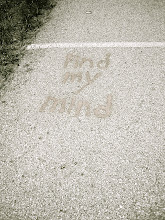Id: In Freud's theory, the id is the element of the psyche which is the source of all basic drives.
Ego: In psychoanalysis, the ego is the element of the psyche which provides the intergrating of personality by mediating between the id and the superego. It also mediates links with the outside world.
Superego: The superego is the portion of the psyche which represents the moral demands of family and society, and is governed by moral constraints.
Here is a situation in my life that can be used to explain Freud's structures of personality:
When I am up late studying for a test the next day, my id urges me to go to sleep, not think about the test tomorrow and fufill my current wishes and drives - sleep! But my ego tells me that I need to study to do well on my test. It deals with the reality of the outside world, namely the reality of my upcoming test. The next day, as I sit down next to a particularly smart classmate to take my test, my id may urge me to cheat - but at this point my superego would come into play, reminding me that I cannot cheat as it is morally wrong. These three structures of personality work constantly, but we are very rarely aware of them at work, as the whole of the id and some of the superego and ego are submersed in our unconscious, with the rest of the ego and super ego being in our preconscious and conscious. Above is a diagram (taken for wikipedia.org) displaying the common "iceberg" metaphor for describing the structures of personality in relation to our conscious, preconscious and subconscious.
Ego: In psychoanalysis, the ego is the element of the psyche which provides the intergrating of personality by mediating between the id and the superego. It also mediates links with the outside world.
Superego: The superego is the portion of the psyche which represents the moral demands of family and society, and is governed by moral constraints.
Here is a situation in my life that can be used to explain Freud's structures of personality:
When I am up late studying for a test the next day, my id urges me to go to sleep, not think about the test tomorrow and fufill my current wishes and drives - sleep! But my ego tells me that I need to study to do well on my test. It deals with the reality of the outside world, namely the reality of my upcoming test. The next day, as I sit down next to a particularly smart classmate to take my test, my id may urge me to cheat - but at this point my superego would come into play, reminding me that I cannot cheat as it is morally wrong. These three structures of personality work constantly, but we are very rarely aware of them at work, as the whole of the id and some of the superego and ego are submersed in our unconscious, with the rest of the ego and super ego being in our preconscious and conscious. Above is a diagram (taken for wikipedia.org) displaying the common "iceberg" metaphor for describing the structures of personality in relation to our conscious, preconscious and subconscious.
One of the most important aspects of Freud's structures of personality is the fact that conflict is a fact of life within personality. The varying demands of the id, ego, superego and external world require a continuing balance act by the ego. The ways in which one's ego balances is what determines behaviour. Freud suggested that individuals will respond to the moral demands of the superego even when this conflicts with reality - an example being when someone risks thier own life for anouther. In other cases, ones ego may allow id's demands for gratification, even when the superego demands against it.
माय यौर आईडी सुपेरेगो एंड एगो अग्री --
talia

No comments:
Post a Comment